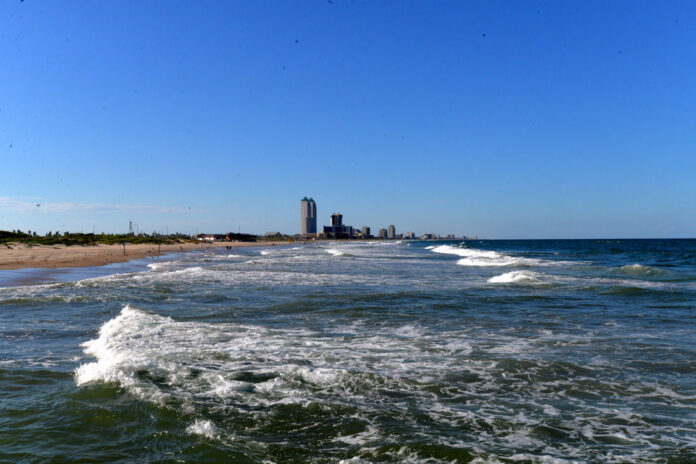HARLINGEN — Just in time for the holiday, several monitoring stations on South Padre Island have recorded elevated levels of fecal bacteria.
Beach Circle, Seaside, Blue Water and Starlight sites have bacteria levels between 35 and 104 colony-forming units per 100 milliliters of sample as of this afternoon.
These results are regarded as medium bacteria counts and, while cause for continued watching, are not high enough to trigger a beach alert.
The high fecal bacteria levels are a continuing nuisance at Island beaches, and usually occur several days after heavy rainfall in the Lower Rio Grande Valley.
“It’s because we’ve had a lot of rainfall down here — not a lot but more than we’ve had in quite a while,” said Tony Reisinger, Texas AgriLife’s extension agent for coastal and marine resources with Texas Sea Grant.
“The Rio Grande and the arroyo probably had higher flows, and that ends up going out into the gulf,” Reisinger said. “It doesn’t last long.”
From the north side of the Island beaches, runoff flows into the Arroyo Colorado, and then washes into the Laguna Madre at Arroyo City. The water enters the Gulf of Mexico through the Port Mansfield Cut.
Generally water movement in the gulf follows the littoral current, which runs northward from the Bay of Campeche toward the upper Texas coast in a clockwise motion.
But recent rain combined with northerly winds may have pushed back against the current, allowing some of the bacteria from the arroyo to flow south from Port Mansfield down to Padre Island beaches.
Conversely, effluent also could be flowing northward with the littoral current to the Island from the mouth of the Rio Grande.
The blame for the bacteria isn’t from faulty sewer plants, but the result of animal waste which has washed into the arroyo.
A beach alert is not issued until bacteria levels reach the “high” level beyond 104 cfu/100ml.
The beach report is issued by Texas Beach Watch, a service of the Texas General Land Office, which monitors bacteria levels at Texas gulf beaches.
Low — Bacteria counts less than 35 cfu/100ml
Medium — Bacteria counts between 35 and 104 cfu/100ml
High — Bacteria counts higher than 104 cfu/100ml (beach advisory recommended)
Cfu/ml: Colony-forming units per 100 milliliters of sample
Source: Texas Beach Watch
For the latest updates, go here: https://cgis.glo.texas.gov/Beachwatch/




